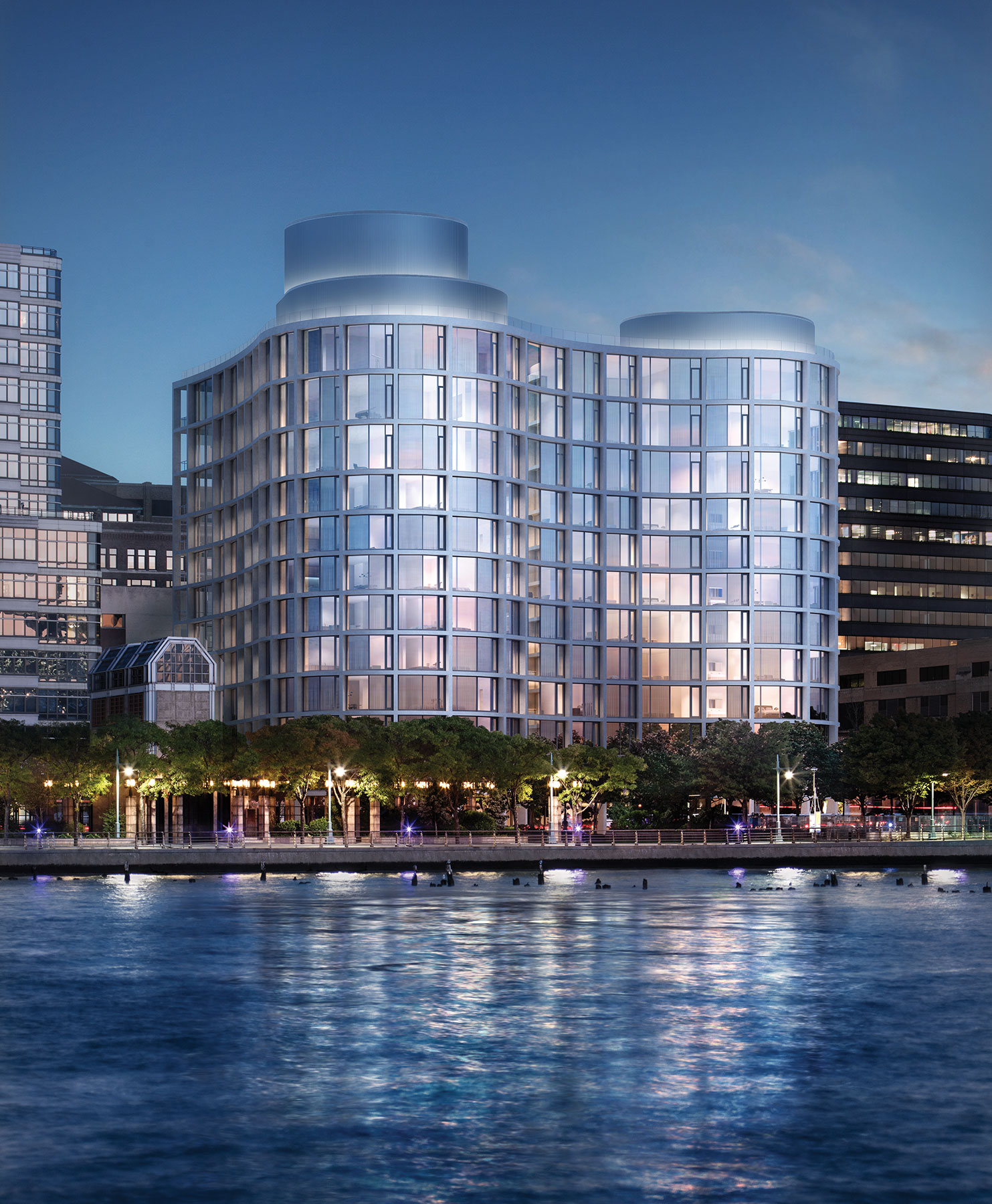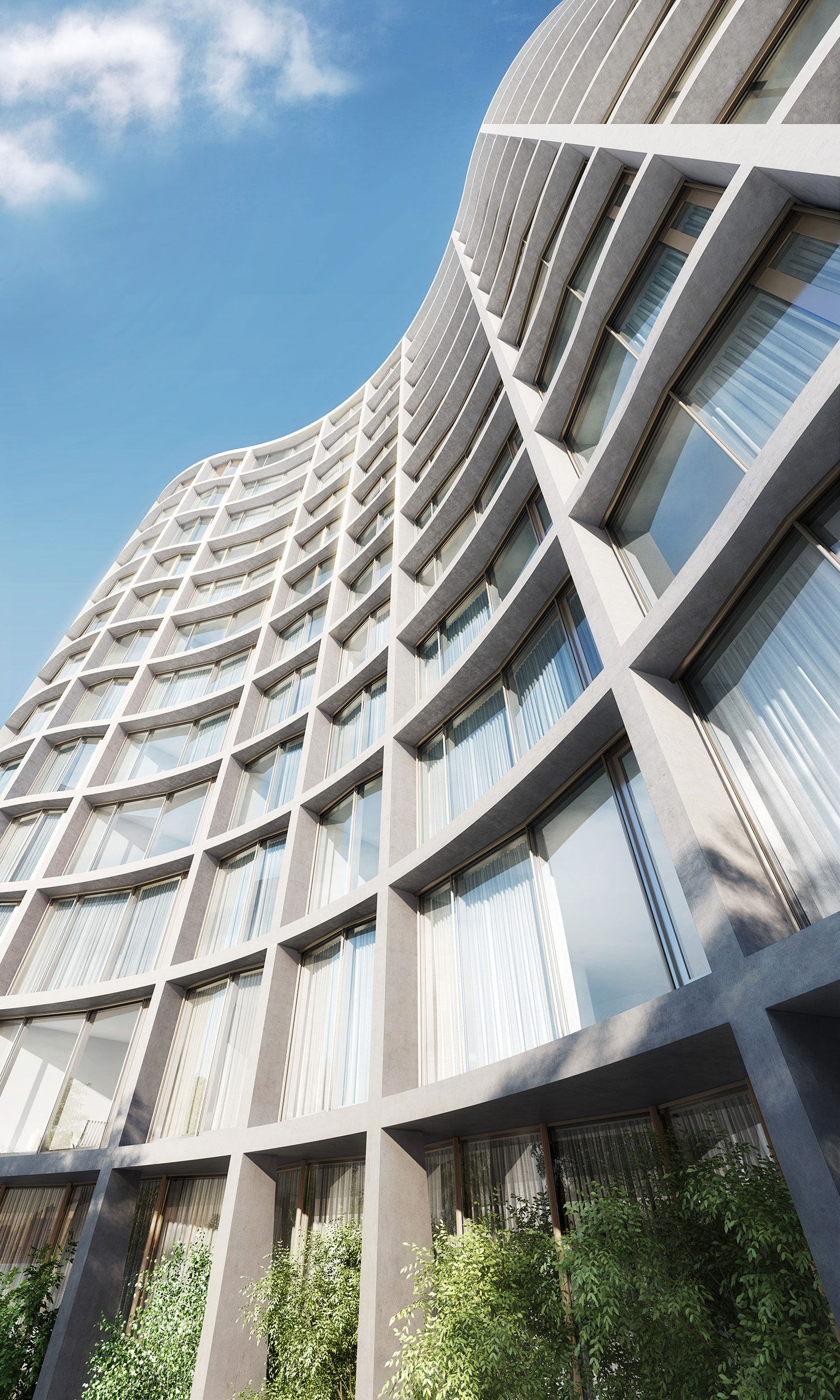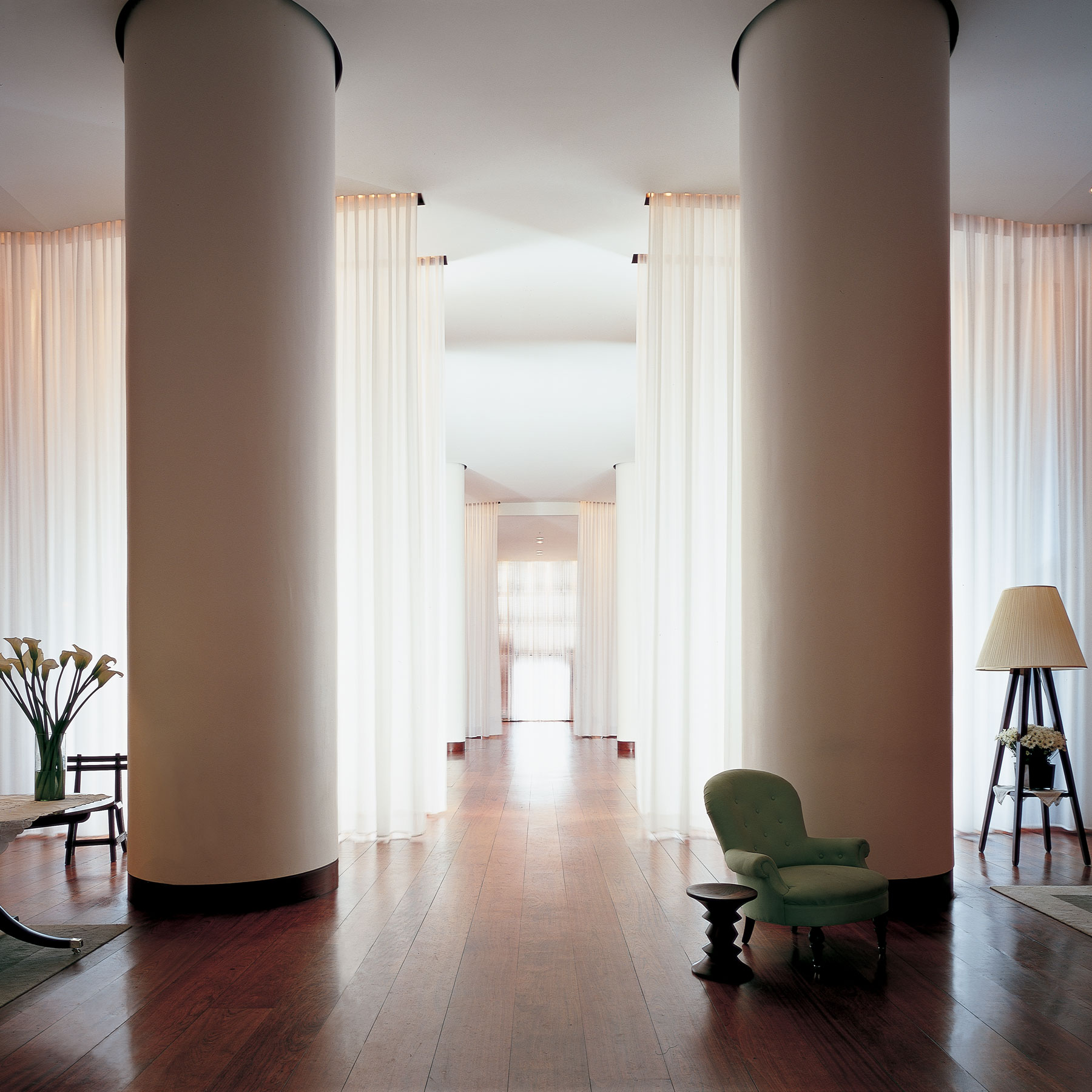"I am not attracted to straight angles or to the straight line, hard and inflexible, created by man. I am attracted to free-flowing, sensual curves. The curves that I find in the mountains of my country, in the sinuousness of its rivers, in the waves of the ocean, and on the body of the beloved woman. Curves make up the entire Universe." –OSCAR NIEMEYER
It will be apparent when Ian Schrager's 160 Leroy building rises out of the ground that it was inspired by the philosophy of the great Brazilian architect Oscar Niemeyer—which Pritzker Prize winning architects Herzog & de Meuron used as a starting point in conceiving this original, new iconic structure. The building is exactly as Niemeyer describes: curvaceous, sensual, free-flowing, seductive and sexy. Much like at the hand of a sculptor, this creation possesses a tactile quality and evokes a sense of purity and pristineness with its white concrete façade and diamond faceted floor-to-ceiling windows that reflect the sky and the water. There is a distinctive inherent rhythm to the building, making it otherworldly at any perspective.
Despite its shape, 160 Leroy was designed from the inside out. The bespoke layouts of the 57 one-of-a- kind apartments are spacious and comfortable, maximizing the expansive views of the Freedom Tower, the Hudson River, North towards the George Washington Bridge and city views East. Some of the apartments even possess views East and West from the same Great Room for rare, idyllic sunrise and sunset views. The layouts were designed for the modern lifestyle—open floor plans to accommodate both entertaining and family life, with just the right amount of privacy. "The only thing that mattered to me was to turn a residential apartment into a real home," says Schrager, "I sought to capture the details of life in the details of the architecture." The thoughtful layouts maximize light and views while taking into consideration a specific market of art collectors by offering an abundance of wall space for hanging art.
Situated in the West Village, the project reunites Schrager with Herzog & de Meuron, whose previous collaborations in Manhattan include 40 Bond, a radical redesign of a traditional cast-iron building that was the architects' first residential project in the United States, and 215 Chrystie, a groundbreaking hotel and residential project on the Bowery set to open in 2016. In the last decade, new developments designed by world-class architects have grown up in the handful of waterfront lots available in the West Village. Schrager identified the site of 160 Leroy as the last chance to create an important contemporary addition to this special neighborhood and possibly the last chance to own a home on the water in the West Village. Stretching a full city block, set on a plinth of white concrete and floating on a bed of light, the building connects with the surrounding streets while also seeming to hover above them—like a spaceship, with its illuminated base that glows at night.


